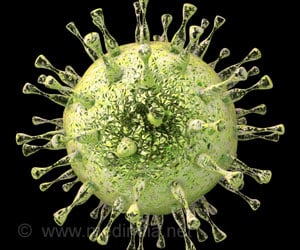Diagnosis of patients with COVID-19 was better using 3D CT scans as compared to RT-PCR, according to a new study.

‘COVID-19 diagnosis can be improved by using 3D models of CT scans. It is highly accurate and gives a detailed anatomical model compared to RT-PCR diagnosis.’
Read More..




Emma R. Schachner, PhD, Associate Professor of Cell Biology & Anatomy, and Bradley Spieler, MD, Vice Chairman of Radiology Research and Associate Professor of Radiology, Internal Medicine, Urology, & Cell Biology and Anatomy at LSU Health New Orleans School of Medicine, created 3D digital models from CT scans of patients hospitalized with symptoms associated with severe acute respiratory syndrome coronavirus (SARS-CoV-2).Read More..
Three patients who were suspected of having COVID-19 underwent contrast enhanced thoracic CT when their symptoms worsened. Two had tested positive for SARS-CoV-2, but one was reverse transcription chain reaction (RT-PCR) negative. But because this patient had compelling clinical and imaging, the result was presumed to be a false negative.
"An array of RT-PCR sensitivities has been reported, ranging from 30-91%," notes Dr. Spieler.
"This may be the result of relatively lower viral loads in individuals who are asymptomatic or experience only mild symptoms when tested. Tests performed when symptoms were resolving have also resulted in false negatives, which seemed to be the result in this case."
Given diagnostic challenges with respect to false negative results by RT-PCR, the gold standard for COVID-19 diagnostic screening, CT can be helpful in establishing this diagnosis.
Advertisement
The CT scans were all segmented into 3D digital surface models using the scientific visualization program Avizo (Thermofisher Scientific) and techniques that the Schachner Lab uses for evolutionary anatomy research.
Advertisement
"This is especially useful in the case where RT-PCR for SARS-CoV-2 is negative but there is strong clinical suspicion for COVID-19."
To date, there haven't been good models of what COVID is doing to the lungs. So, this project focused on the visualization of the lung damage in the 3D models as compared to previous methods that have been published - volume-rendered models and straight 2D screen shots of CT scans and radiographs.
"Previously published 3D models of lungs with COVID-19 have been created using automated volume rendering techniques," says Dr. Schachner. "Our method is more challenging and time consuming, but results in a highly accurate and detailed anatomical model where the layers can be pulled apart, volumes quantified, and it can be 3D printed."
The three models all show varying degrees of COVID-19 related infection in the respiratory tissues - particularly along the back of the lungs, and bottom sections. They more clearly show COVID-19-related infection in the respiratory system compared to radiographs (x-rays), CT scans, or RT-PCR testing alone.
Source-Eurekalert















